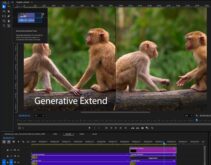In my latest survey, the average video configuration was very close to 640×360, with a combined audio/video data rate of 837 kbps (758 kbps video, 79 kbps audio). This computes to an average bits per pixel value of .115. If videos posted on your site are lower than these figures, you’re probably being unnecessarily conservative.
I track the data rate and video configuration used by broadcast sites since they indicate the types of streams that their mass market audiences can retrieve and play, and also the quality of streams that web video consumers are used to viewing. In my latest survey (11/2011), the average video configuration was very close to 640×360, with a combined audio/video data rate of 837 kbps (758 kbps video, 79 kbps audio). This computes to an average bits per pixel value of .115. If videos posted on your site are lower than these figures, you’re probably being unnecessarily conservative.
By way of background, I collect these statistics each year before speaking at Streaming Media Events in New York City, London and Los Angeles. I visit the major three-letter networks and many others, and download and analyze their files using various tools (you can view the individual stats, including H.264-related encoding parameters, here). I try to find the largest file available from each site, but my search isn’t exhaustive, so these numbers should be considered conservative. I don’t count files that I can’t download and play. Unfortunately, my tools can’t ascertain details like audio parameters in all files, so some of this data is absent.
For presentation in my seminars, I group the sites into three classes based upon total pixels in the file, with the numbers in each class in the category label (so there were 16 sites in the Midrange category).That’s what you see in the table below.

What do these numbers tell me? Quite a lot.
- First, the average video consumer on the web can download and play files at a combined average data rate of at least 837 kbps (the overall average) and probably up to and including 1.2 Mbps (the aggressive category with an assumed audio data rate of 128 kbps stereo). If the video configuration of your files is much smaller than this, you’re being too conservative, and your videos will look puny compared to the other streams consumed by your viewers.
- Second, the average broadband download speed according to website Speed Matters is around 3 Mbps. This tells me that the streams distributed by these broadcast sites aren’t limited by their viewer’s bandwidth, but by the cost of streaming. That is, these sites could probably successfully distribute an 848×480@1500 Mbps stream or larger to most viewers, but the bandwidth costs would be too high. So the averages presented in the table aren’t pushing the envelop values. Rather, they represent the optimal mix of quality and cost. If you’re a premium B2C site seeking to make a strong impression, you can probably go much higher (Victoria’s Secret streams their sexy lingerie videos at 996×544@ a combined audio/video data rate of 1364 kbps, while Burberry distributes some streams at 720p @ just under 2 Mbps). On the other hand, if you’re a corporate site distributing an informational-type video, the overall average is a good starting point.
- In 2010, the average resolution was 581×342@664 kbps video/84 kbps audio, which translated to a bits per pixel of .120. Broadcast sites have been able to increase their resolution and drop their bits per pixel value in part because of a significant shift to the H.264 codec. If you’re still using VP6, it’s time to switch.
- In terms of frame rate, with one exception, all sites produced at either 24, 29.97 or 30 fps, presumably the original frame rate of the source video. The only site that reduced the frame rate was the Golf Channel, who produced at 15 fps.
- About half of the midrange sites used mono audio, which is sufficient when the audio is collected by monaural microphones like lavalieres or boom microphones. Prime time shows like ABC’s Castle needs stereo because there are directional cues in the audio signal (the gunshot from the left, the car horn on the right). If your content is primarily speed, use 64 kbps mono and allocate the saved bandwidth to video where it can do some good.
That’s it.
 Streaming Learning Center Where Streaming Professionals Learn to Excel
Streaming Learning Center Where Streaming Professionals Learn to Excel








